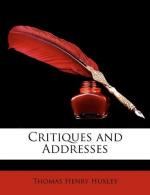“A fin de completer aujourd’hui l’enonce du fait general, je rappellerai que les corps, doue des fonctions accomplies dans les tissus des plantes, sont formes des elements qui constituent, en proportion peu variable, les organismes animaux; qu’ainsi l’on est conduit a reconnaitre une immense unite de composition elementaire dans tous les corps vivants de la nature."[1]
[Footnote 1: “Mem. sur les Developpements des Vegetaux,” &c.—“Mem. Presentees.” ix. 1846.]
In the year (1846) in which these remarkable passages were published, the eminent German botanist, Von Mohl, invented the word “protoplasm,” as a name for one portion of those nitrogenous contents of the cells of living plants, the close chemical resemblance of which to the essential constituents of living animals is so strongly indicated by Payen. And through the twenty-five years that have passed, since the matter of life was first called protoplasm, a host of investigators, among whom Cohn, Max Schulze, and Kuehne must be named as leaders, have accumulated evidence, morphological, physiological, and chemical, in favour of that “immense unite de composition elementaire dans tous les corps vivants de la nature,” into which Payen had, so early, a clear insight.
As far back as 1850, Cohn wrote, apparently without any knowledge of what Payen had said before him:—
“The protoplasm of the botanist, and the contractile substance and sarcode of the zoologist, must be, if not identical, yet in a high degree analogous substances. Hence, from this point of view, the difference between animals and plants consists in this; that, in the latter, the contractile substance, as a primordial utricle, is enclosed within an inert cellulose membrane, which permits it only to exhibit an internal motion, expressed by the phenomena of rotation and circulation, while, in the former, it is not so enclosed. The protoplasm in the form of the primordial utricle is, as it were, the animal element in the plant, but which is imprisoned, and only becomes free in the animal; or, to strip off the metaphor which obscures simple thought, the energy of organic vitality which is manifested in movement is especially exhibited by a nitrogenous contractile substance, which in plants is limited and fettered by an inert membrane, in animals not so."[1]
[Footnote 1: Cohn, “Ueber Protococcus pluvialis,” in the “Nova Acta” for 1850.]
In 1868, thinking that an untechnical statement of the views current among the leaders of biological science might be interesting to the general public, I gave a lecture embodying them in Edinburgh. Those who have not made the mistake of attempting to approach biology, either by the high a priori road of mere philosophical speculation, or by the mere low a posteriori lane offered by the tube of a microscope, but have taken the trouble to become acquainted with well-ascertained facts and with their




